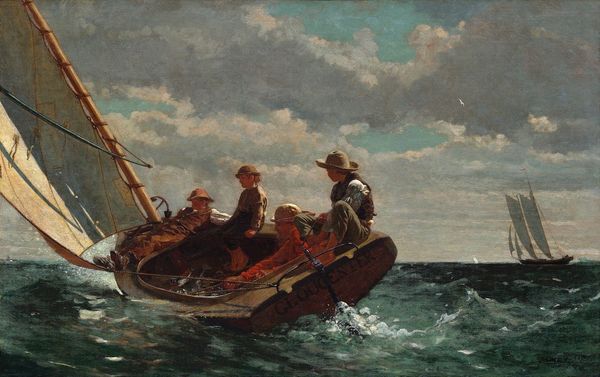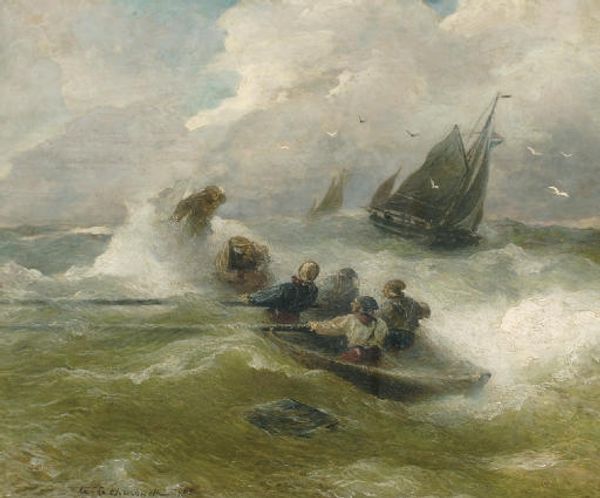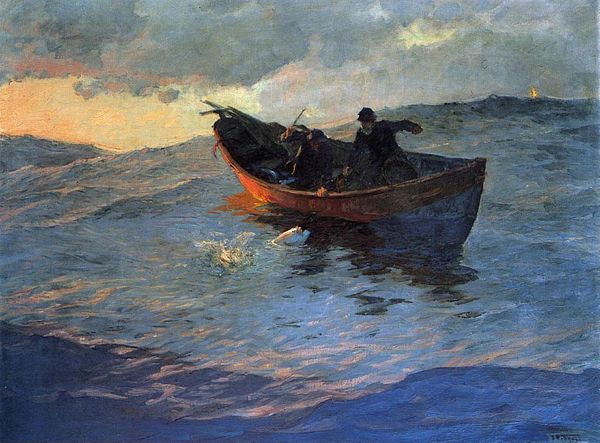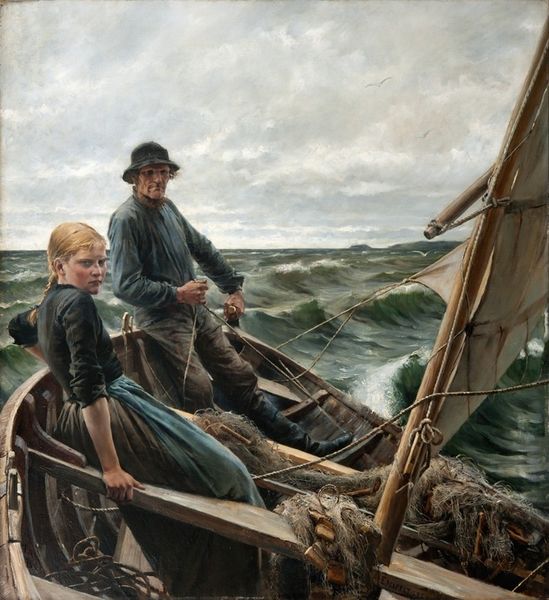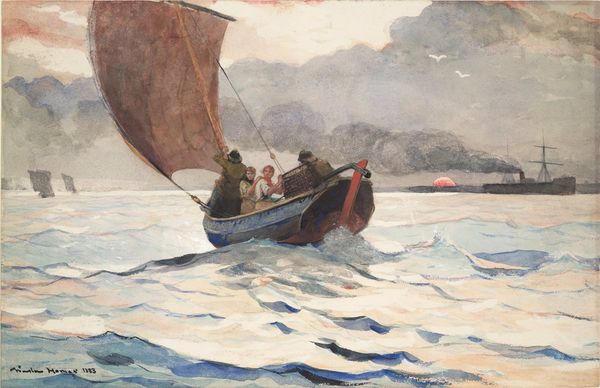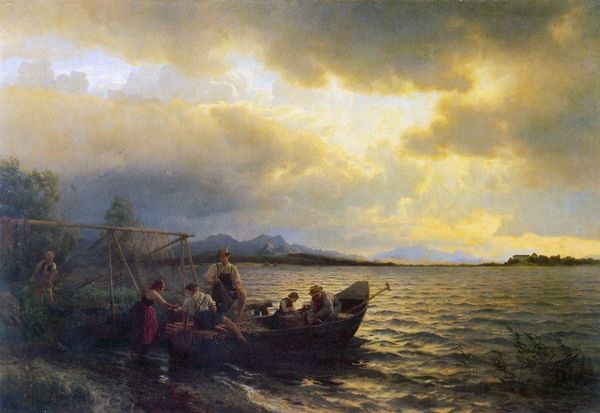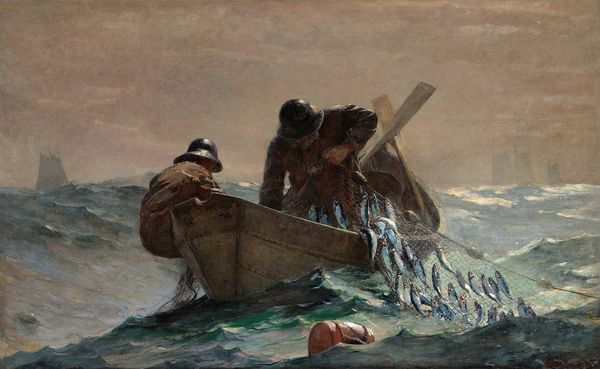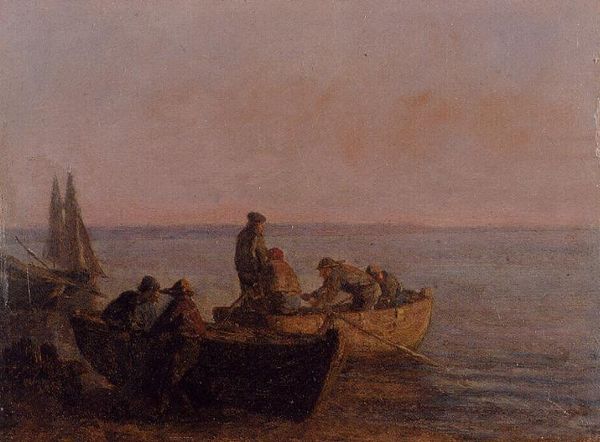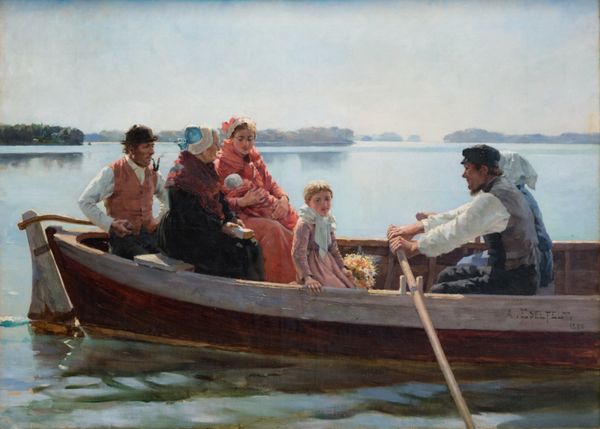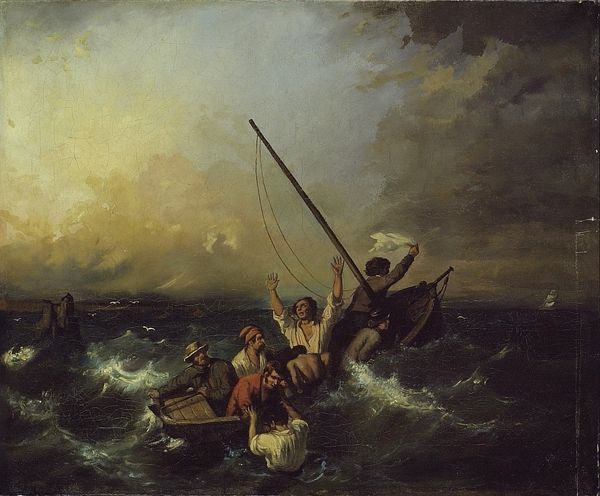
plein-air, oil-paint, impasto
#
figurative
#
impressionism
#
plein-air
#
oil-paint
#
landscape
#
painted
#
figuration
#
oil painting
#
impasto
#
genre-painting
#
watercolor
#
fine art portrait
#
realism
Copyright: Public Domain: Artvee
Curator: This image gives me the feeling of pure youthful energy—salt spray, laughter, and maybe just a tiny bit of seasickness. Editor: Absolutely. Winslow Homer’s "The Flirt," painted in 1874 using oil on canvas, offers a window into a specific moment in American leisure, yet its themes ripple outwards, connecting to much larger discussions. Curator: I can almost smell the ocean air coming off this one. The light feels very much in line with the Impressionists, though I always felt that Homer had something of his own that resisted just being called "Impressionism." Editor: Indeed. He occupies a fascinating space between realism and Impressionism. We see these sun-drenched, plein-air techniques coming into play, which offer a real sense of immediacy, a specific moment in time—but it is important to consider how this reflects the rapidly changing social dynamics post-Civil War. Homer often depicts scenes of recreation and leisure that suggest shifting class structures. Curator: True! The painting depicts these young men enjoying what would've been seen at the time as leisure for upper-class folks, perhaps a telling sign of the times! Although I do think some of that romantic energy and interpretation misses some underlying aspects of privilege in its narrative. It just sings to me of a bright, carefree world. Even the name of the boat, "The Flirt," feels suggestive of youthful innocence...and maybe a bit of trouble. Editor: And who has access to that carefree existence, is the question that haunts my mind. It prompts questions around who can and can't participate in certain social rituals like a casual day of sailing, given prevailing power structures. Also, let’s note how Homer frequently centers white figures in these supposedly universal images of American life and leisure. Curator: Good point. I think as viewers, we have to embrace its beauty but still remember those points of access and privilege, and that the painting isn't free from bias, intended or unintended. And, isn't that kind of the point of viewing art? Editor: Exactly. Examining these images in relationship to access and identity enables the work to continue contributing meaning and critical dialogue today. It moves beyond mere sentimentality. We learn to think more broadly. Curator: Well put. So, next time I am seasick, I will make sure to contemplate the societal implications, right after I find my Dramamine!
Comments
No comments
Be the first to comment and join the conversation on the ultimate creative platform.
